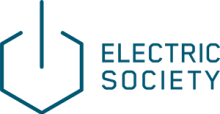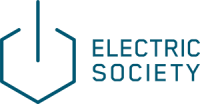Frequently Asked Questions
Find the answers you are looking for
Most of the actual systems allow you to monitor your consumption of electricity but it’s like watching your money go down the drain. You can’t stop it, you can just “monitor” it but not control the consumption. Or in some cases you can control whether devices are turned on or off, or set temperature levels of a zone, but you can’t see the effective consumption of the system item by item, room by room. None of the existing systems allow you to choose which device you want to power and which you want to switch off.
It’s a true Plug and Play. Once the device is in place, whether it is a switch, a power plug, a lamp, or a thermostat, the system proceeds to identify and authenticate it – all on its own.
There are no bluetooth connections, network verifications, app subscription models or expensive installations… You just plug it and the system will do everything for you.
Yes. Apart from energy optimization and privacy control, ease of use was always imperative. No programming needed, switching scenarios and configuring a device is as simple as a drag and drop on your screen.
Remember what a fully distributed system meant for 90’s music that was being played on cassettes and CDs? Today’s platforms like Spotify still rely on distributed systems.
We have made groundbreaking strides and are turning them into future standards for the world of home automation.
Reliability and scalability.
Biggest concern people have with their smart systems is losing electricity and losing control of their house. This is not an issue with a fully distributed system, but is a common issue for the undistributed ones.
Scalability is another problem. Without a fully distributed system you have to pay attention to the capacity, to servers, to connectivity. If you have too many devices, you will need another server, and to figure out how those two will communicate with one another. That means getting a programmer involved to code the interaction protocols. All this adds to the overall cost of having and moreover maintaining such systems.
Our system has full scalability without the cost leaps, and the best part is – it works on its own, as is intended.
Most of the actual systems allow you to monitor your consumption of electricity but it’s like watching your money go down the drain. You can only monitor the consumption, control whether devices are turned on or off, or set temperature levels of a zone, but you can’t see the effective consumption of the system item by item, room by room. And none of the existing systems allow you to choose which device you want to power and which you want to switch off.
Our system allows you to set a priority from 1 to 10 for each item of your house equipped with our system. In case of a power outage, you can set the priority for the fridge or freezer to remain in power so that your food doesn’t get spoiled, while you enjoy a romantic candlelit dinner.
Our system does not sell your data to the energy providers, we do not collect them, there is no subscription, no hidden charge, no cloud based system – the system you install is all yours and you own it. So, we are offering full control over your privacy.
No, we are constantly striving to upgrade our system and offer even more to our users. Feel free to join our channel and follow us, and we will keep surprising you.
Since we just integrate our intelligence, partners that use it will provide a first level of product support. We can offer additional levels of support (mainly 2nd and 3rd).
No – we are the brains behind smart products. Just like Intel, we are inside and we provide our technology to other B2B clients. We want to put our “intelligence” into various partners’ everyday products and in that way make a huge impact on power consumption and optimization.
Our business model is a B2B so far, and we aren’t currently selling to B2C clients.
We can provide a quote for a whitelabel series upon request for bigger projects like malls, communities or entire city blocks.
Yes! On a global level, we estimate that we can save around 30% just on home automation installations. But again, we are not selling our own product line or selling to clients directly.
Depending on your project and your country, we will be glad to send you a list of providers which have included our technology in their products.
If you have already invested a substantial amount of money in your home automation, we want to enable an easy integration into our system. We are currently developing an interface for most of the existing systems out there. That way you won’t need to change to a completely new system, and you will save money in the process. That also means that, for example, you can still have a Zigby System interfaced with our ES System.


